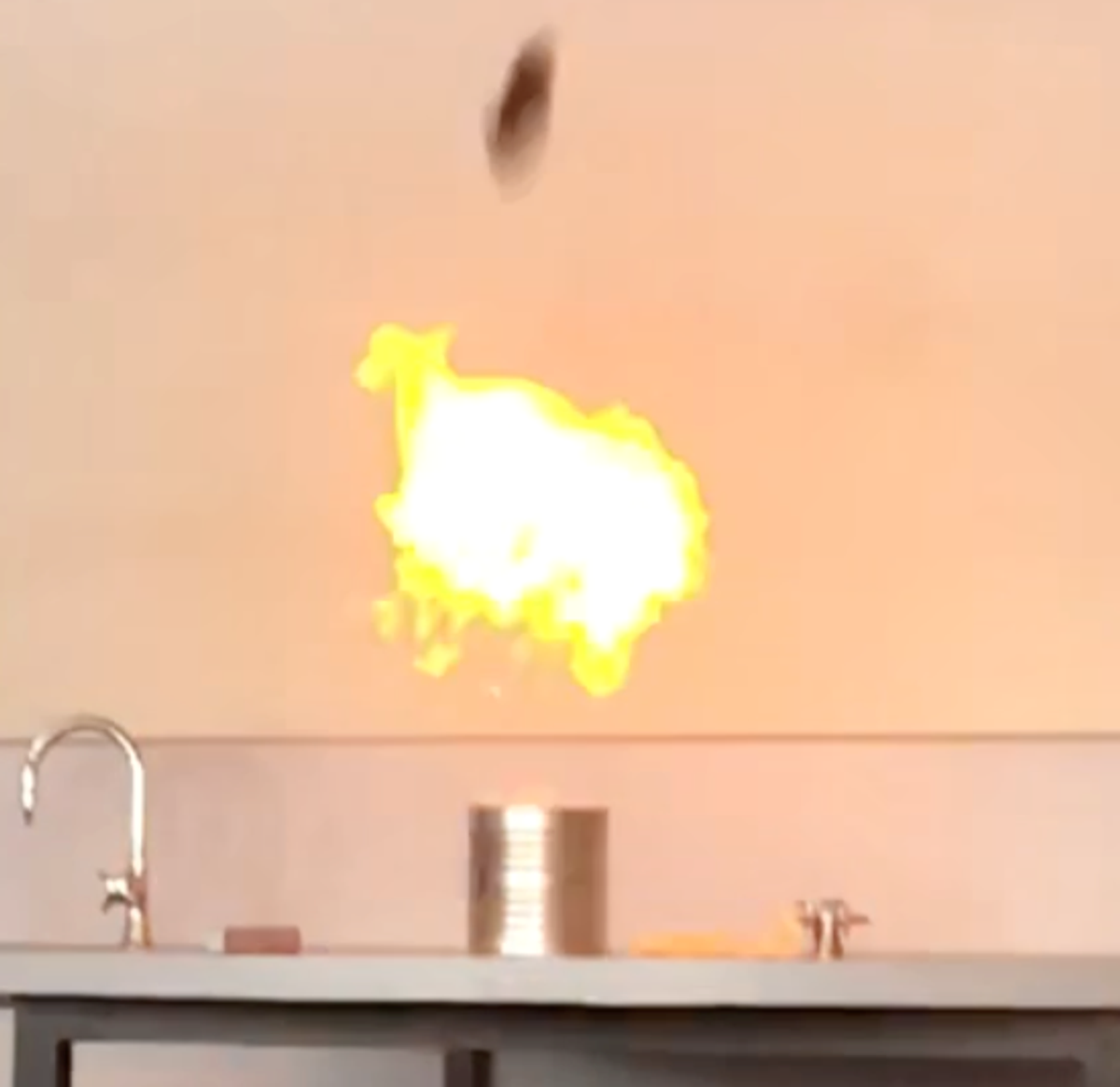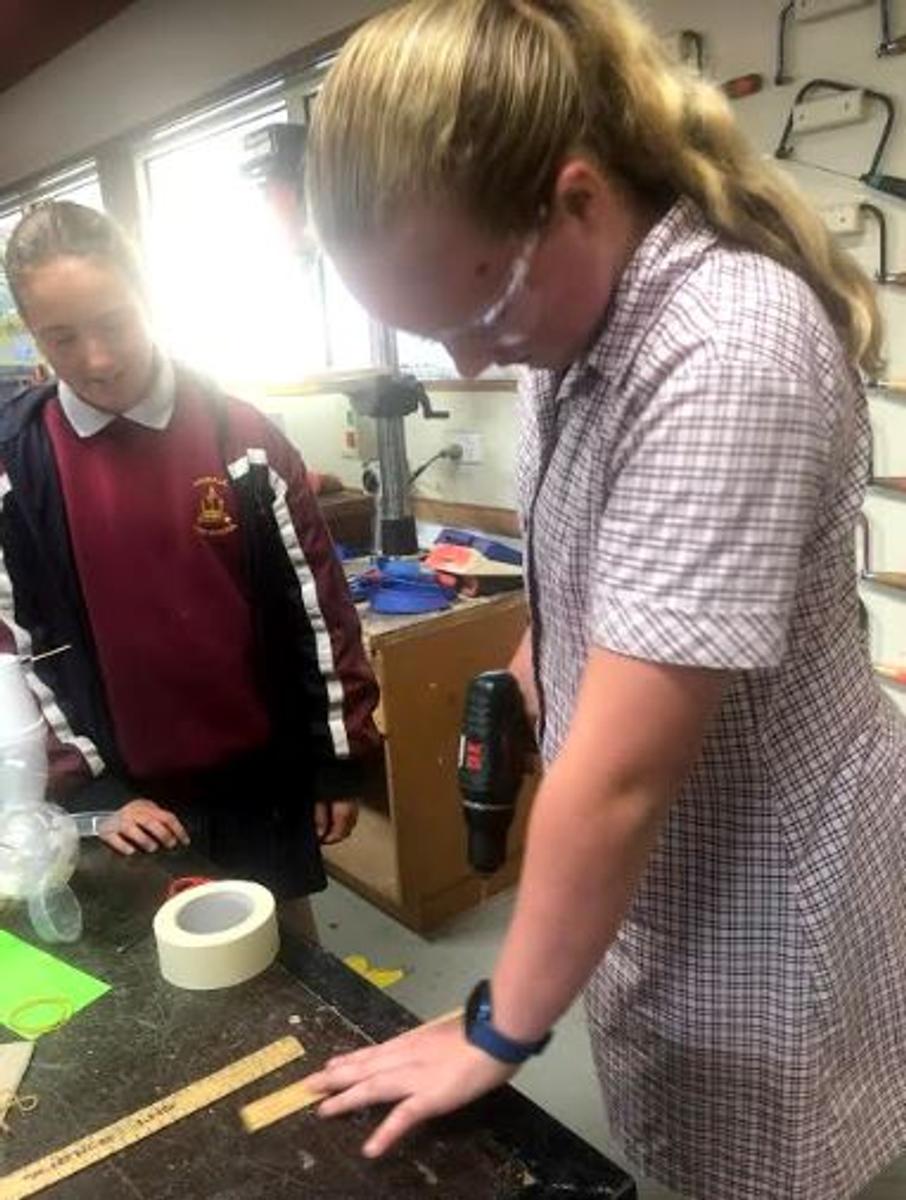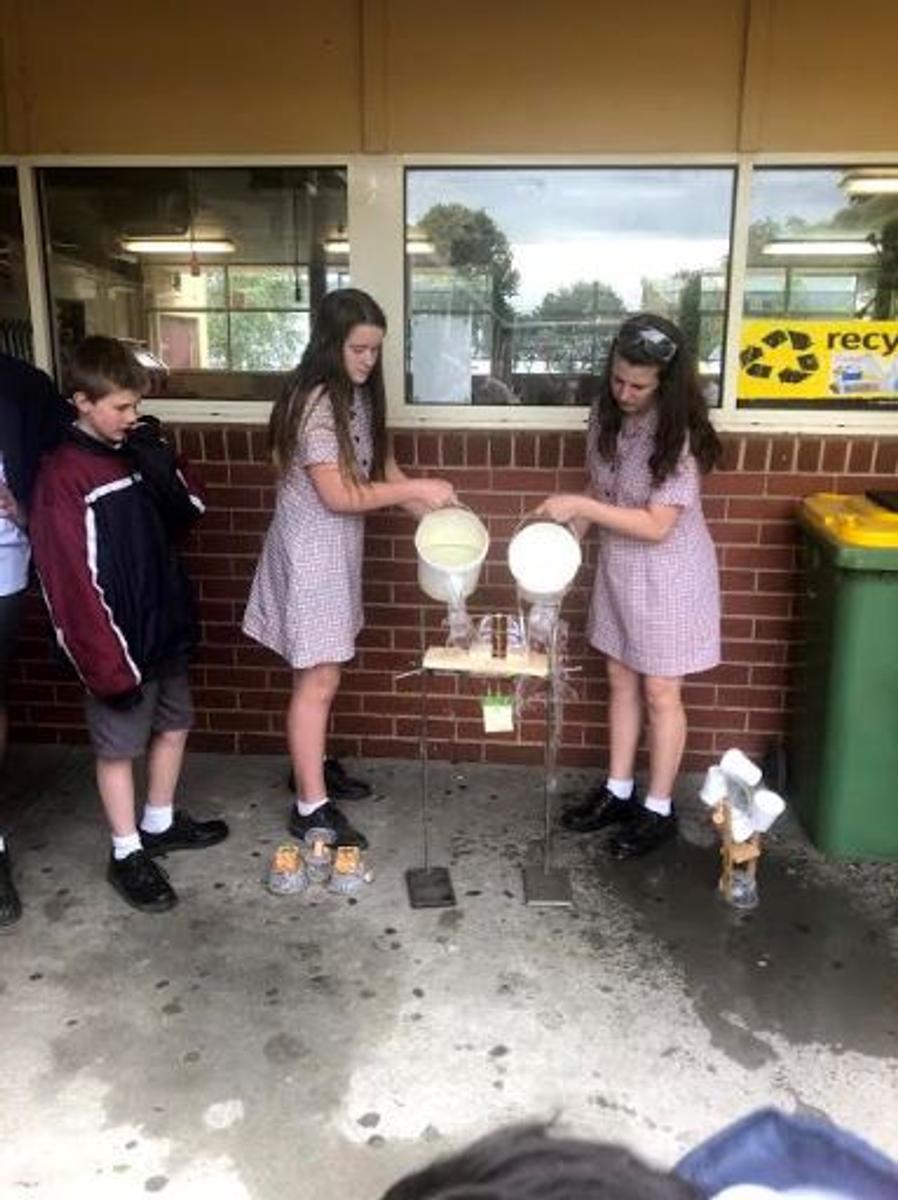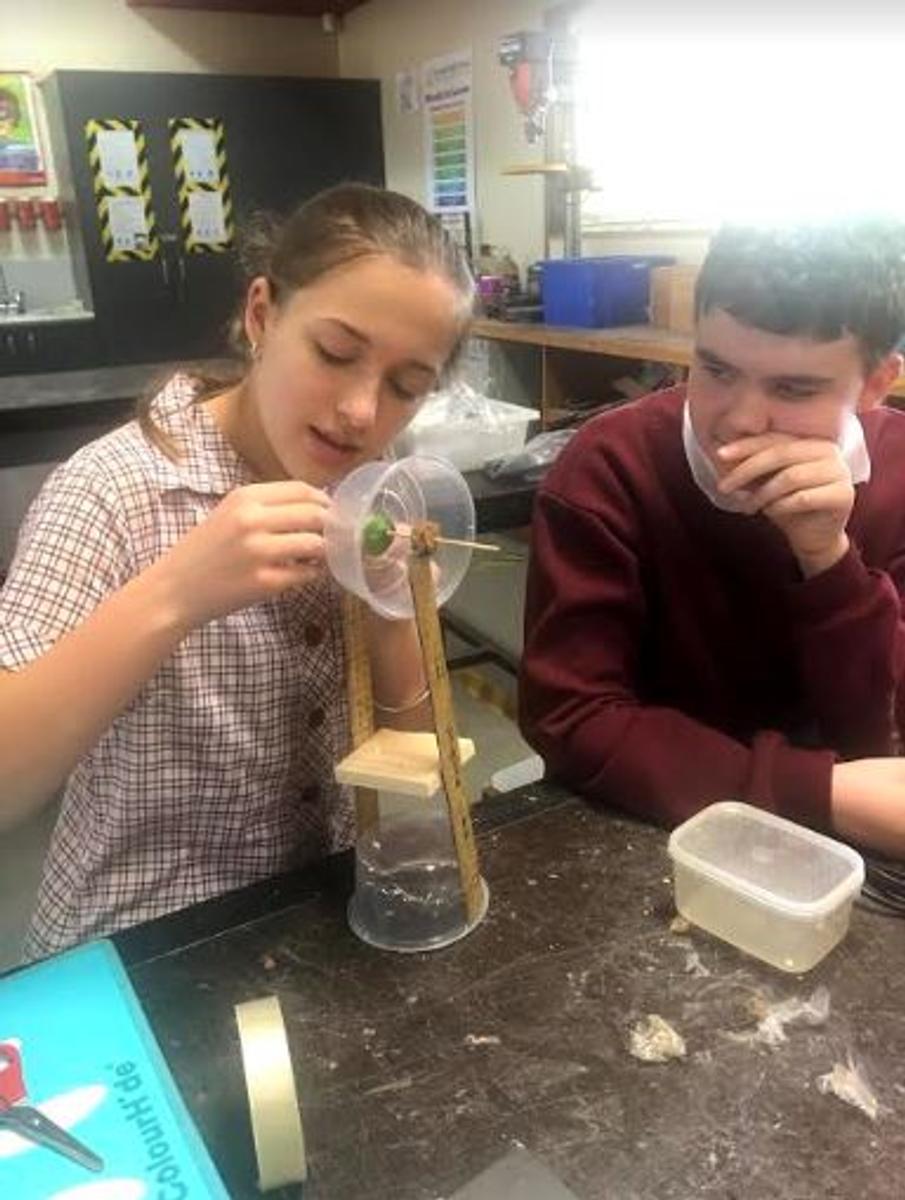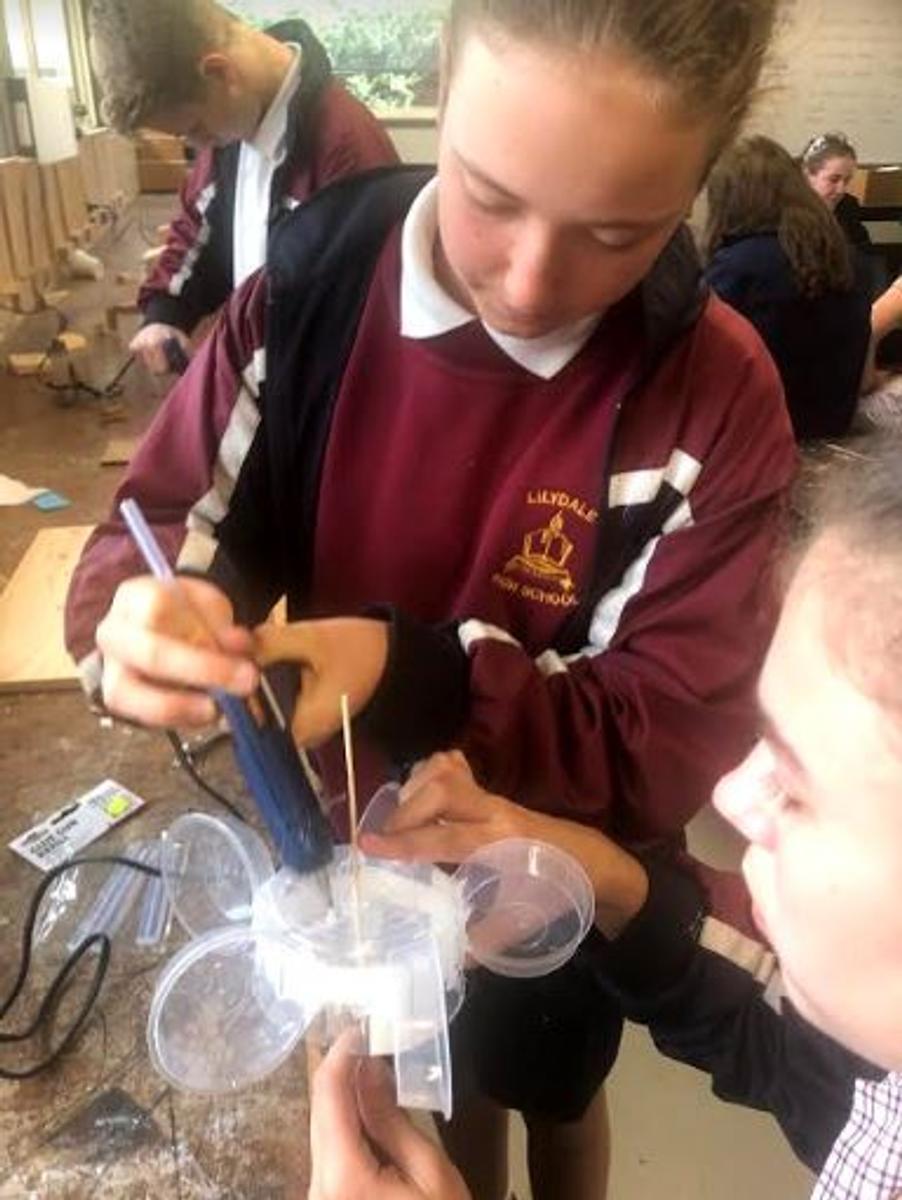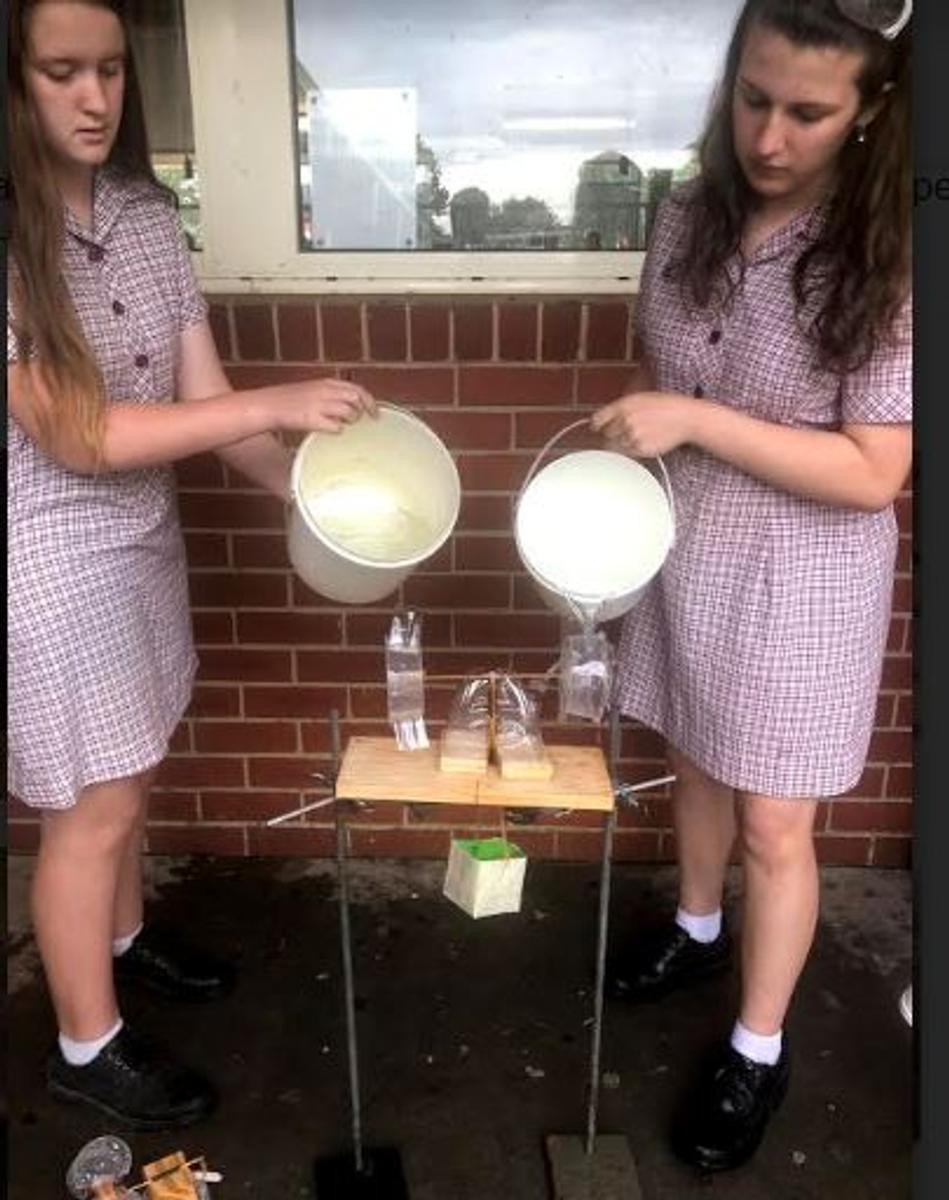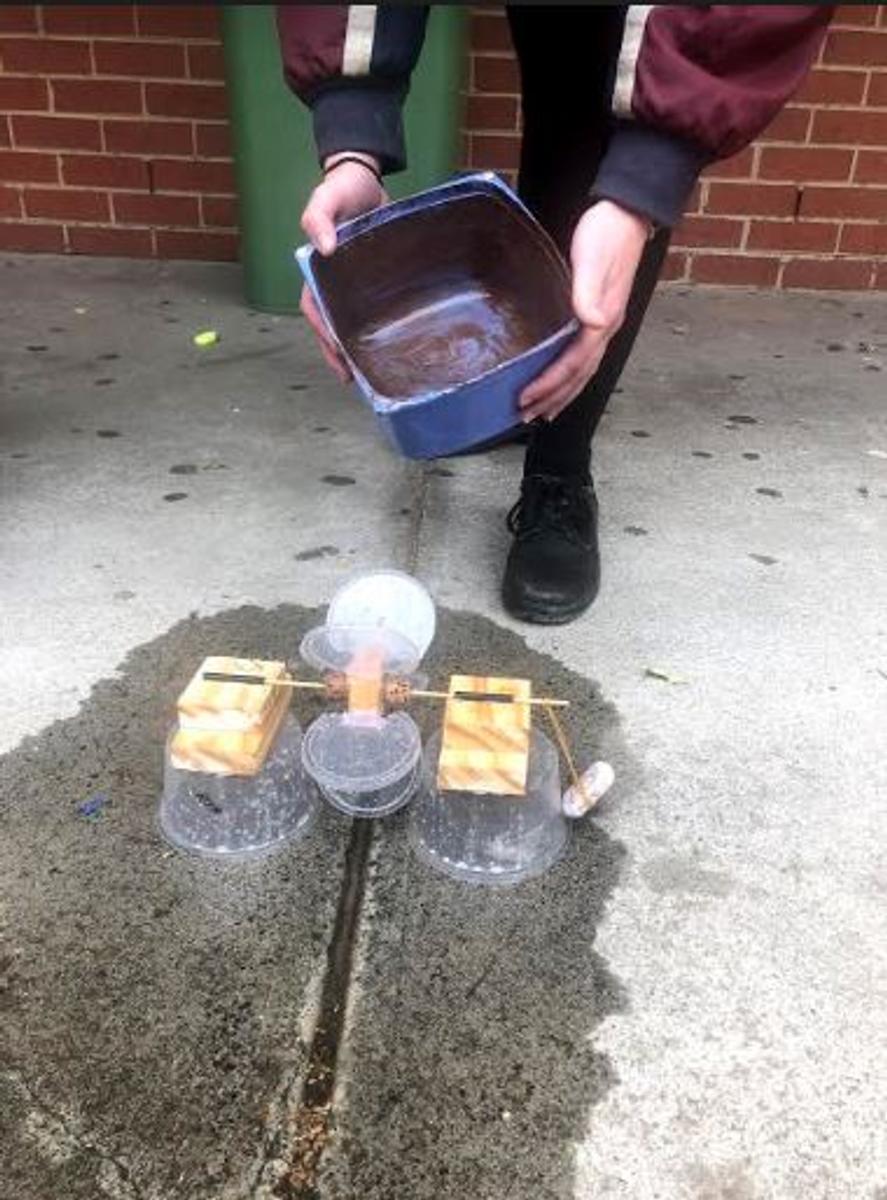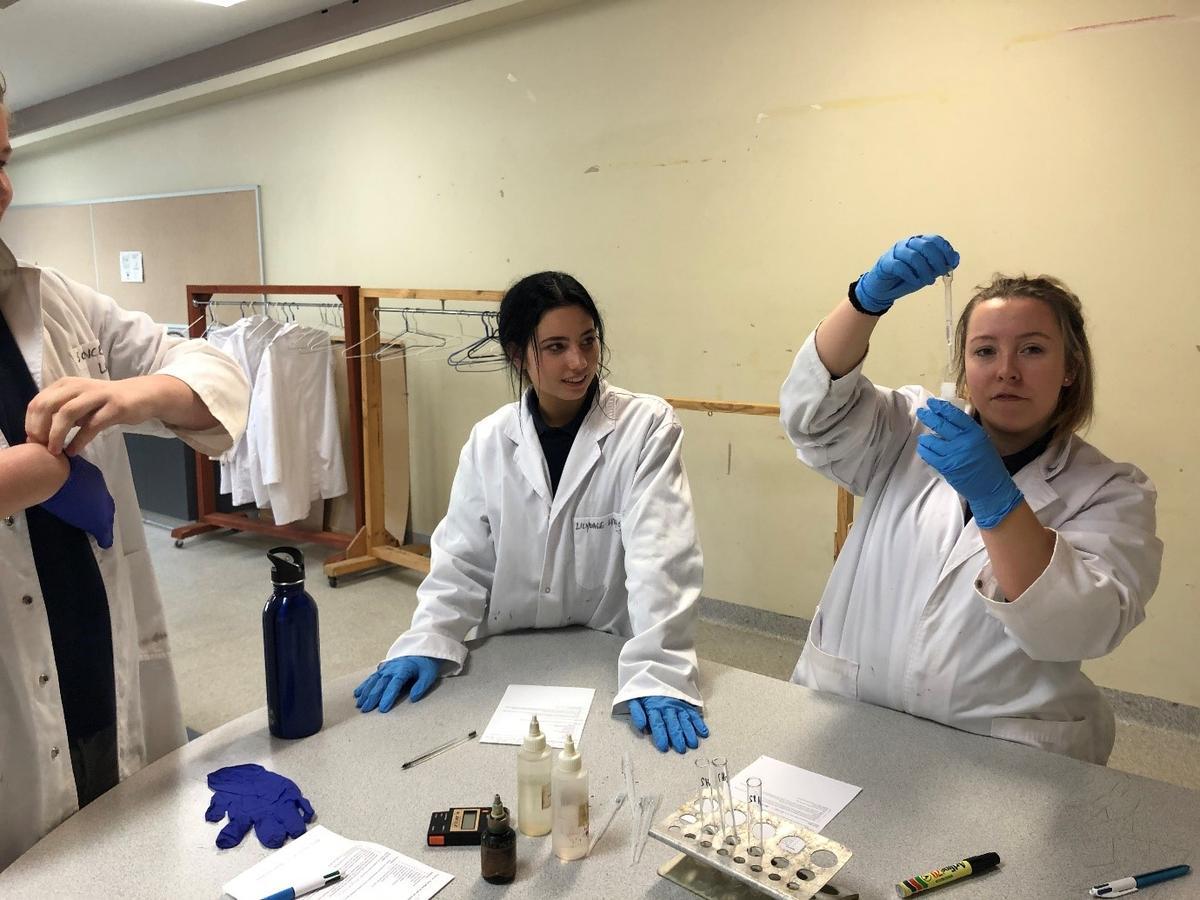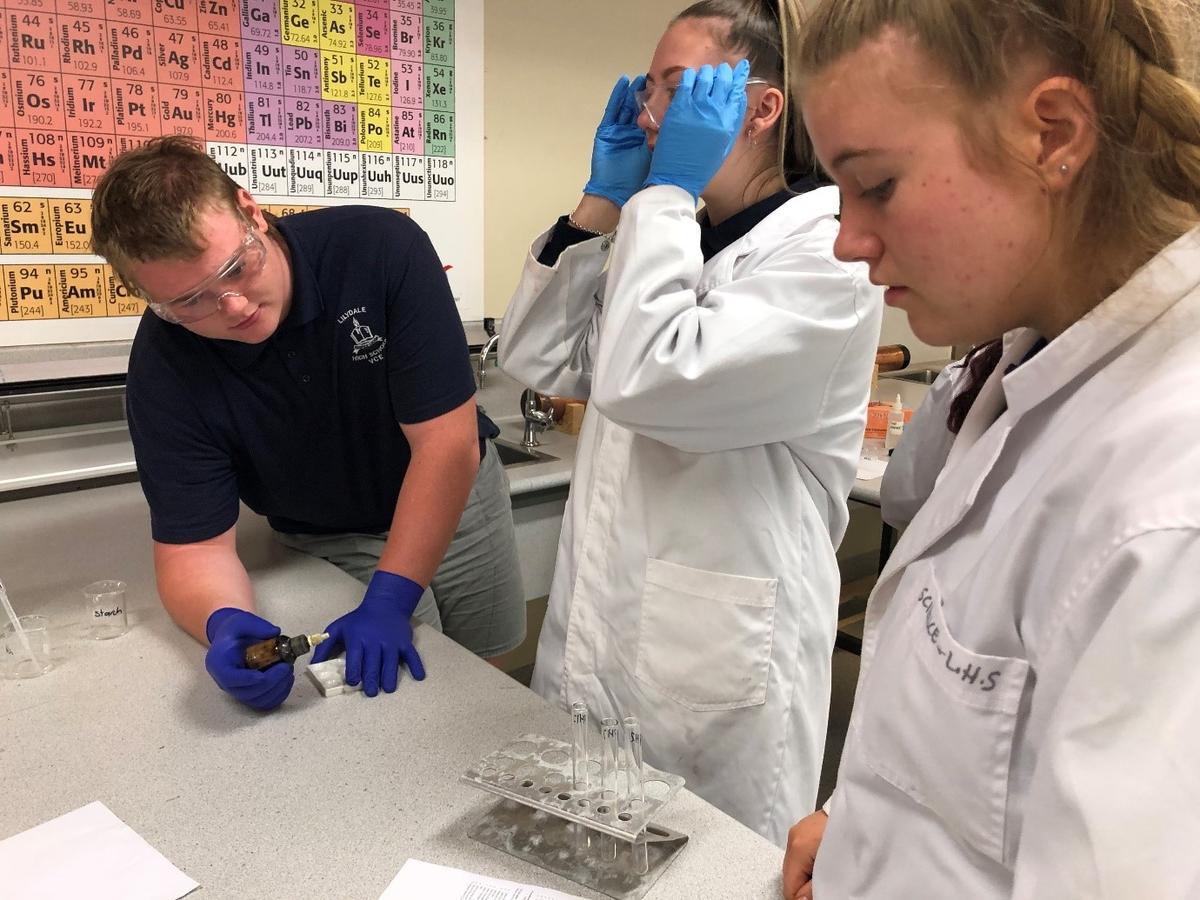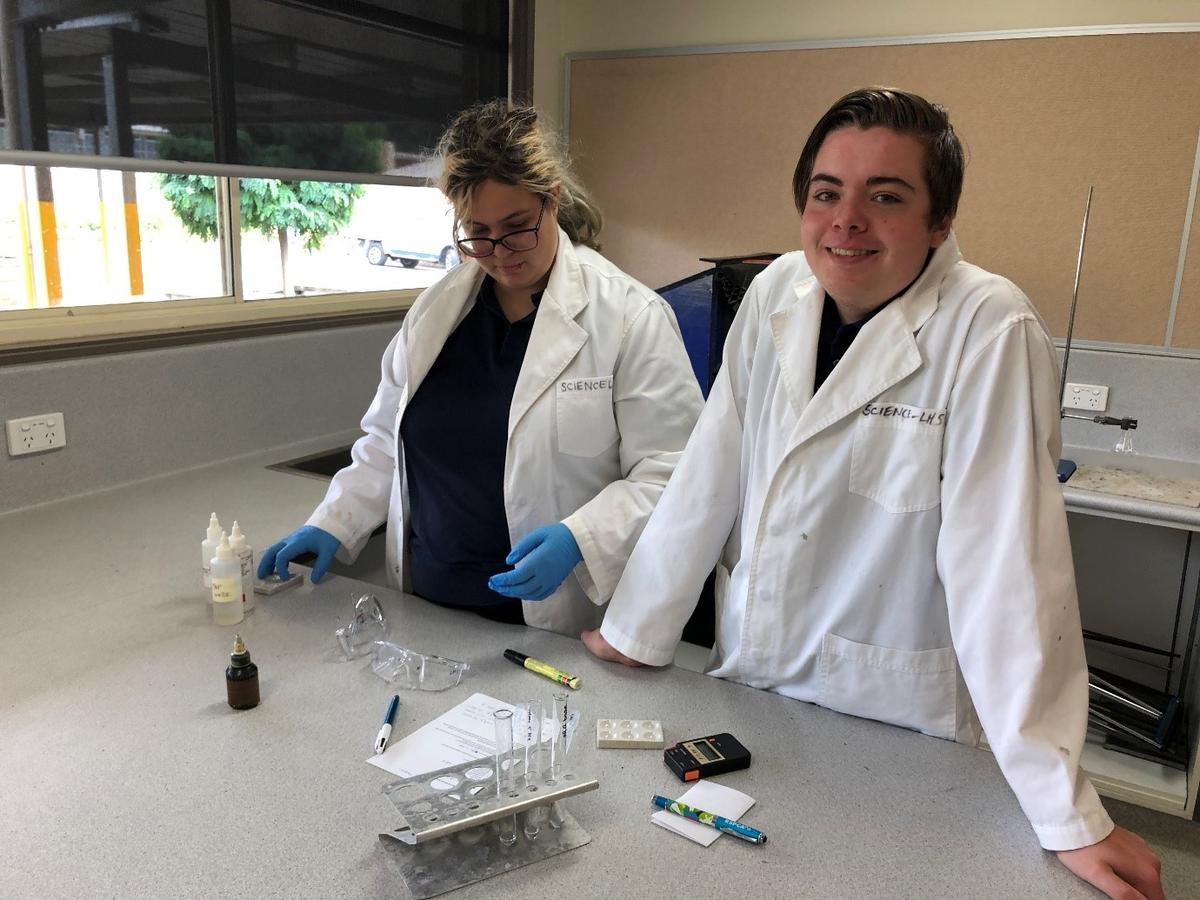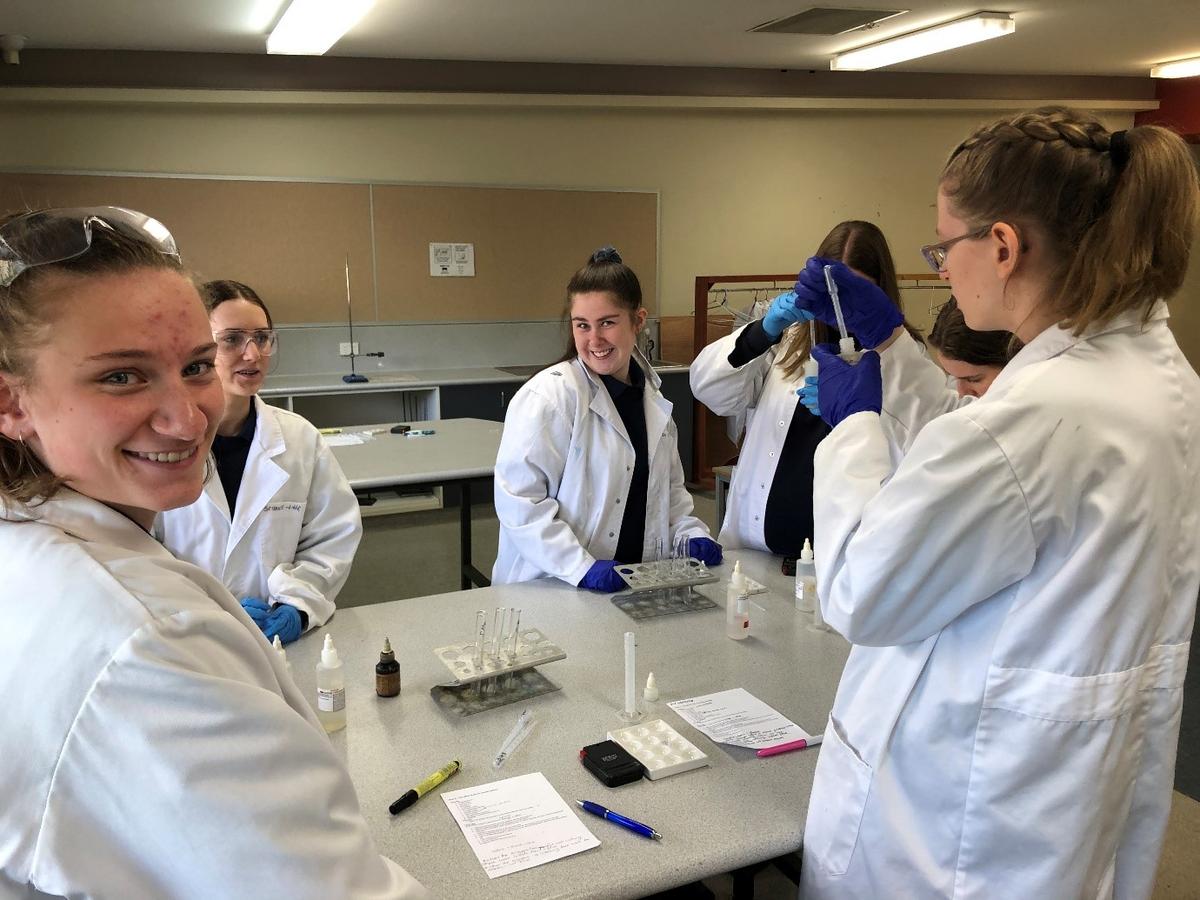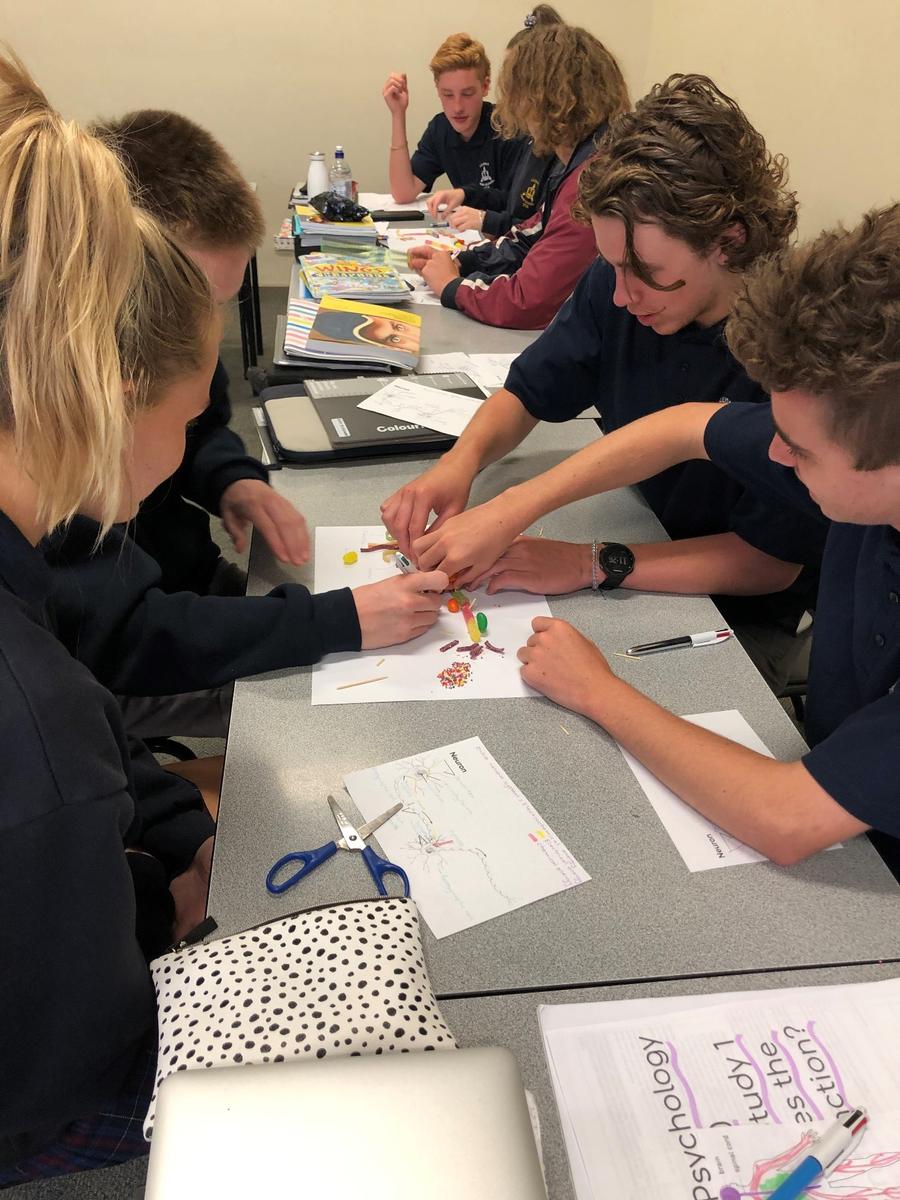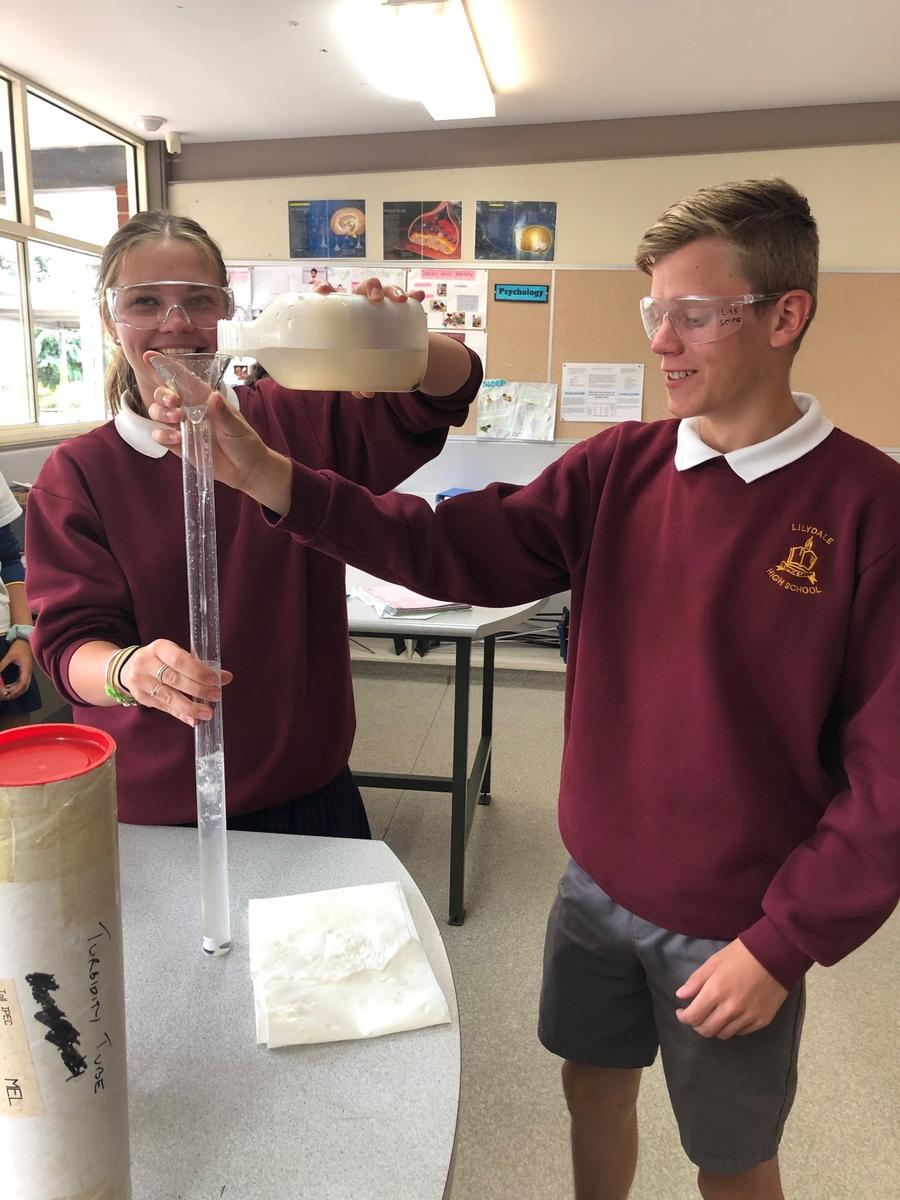SCIENCE

Year 8 Science
Energy
Year 8 students are studying the concept of Energy at the moment. They are looking at the various forms of energy and in particular, the conversion of energy from one form to another and the efficiency of energy conversion in various situations.
A very current topic of investigation is renewable / nonrenewable forms of energy and sustainability.
A spectacular example of energy conversion was a recent experimental demonstration of the released energy from a Milo tin containing Hydrogen. The chemical energy released by the burning and eventual exploding Hydrogen, was converted into light, sound and kinetic energy of the lid, which went upwards with enough force to reach the ceiling.
A photograph taken by a Year 8 student using the slow motion feature of their iPad is shown below.
Garry Bennett
Year 8 Science
Making a Waterwheel
Last week, we were able to finalise the designs for the last Learning Task of the Term. Our waterwheels showing transference of energy were built and ready to go.
Charli amazed us all with her skills with a drill.
Congratulations to 8A; you never gave up! You modified prototypes and collaborated in your teams to show how energy can be transferred from one place to another.
Julie Colyer
Year 12 Biology
It’s nearly time for SAC 1! The students have been investigating the effect of different temperature and different pH on enzyme function. They have investigated both trypsin and amylase to establish their optimum temperature and pH.
They are now ready to smash the structured questions in Week 8!
Year 11 Psychology
Lolly neurons were a hit! The students modelled the structure of a neuron using lollies, wrote the function of each part and them got to eat them!
Year 10 Science
The Year 10s recently completed an investigation task where they analysed the water quality at LilLydale Lake.
The students shared the task throughout classes of analysing the water quality at five lake sites by measuring the pH, the level of phosphates, the level of nitrates, amount of dissolved salts and turbidity.
Great job to 10SSC5!
Kristy Bjarnelind
Head of Science

